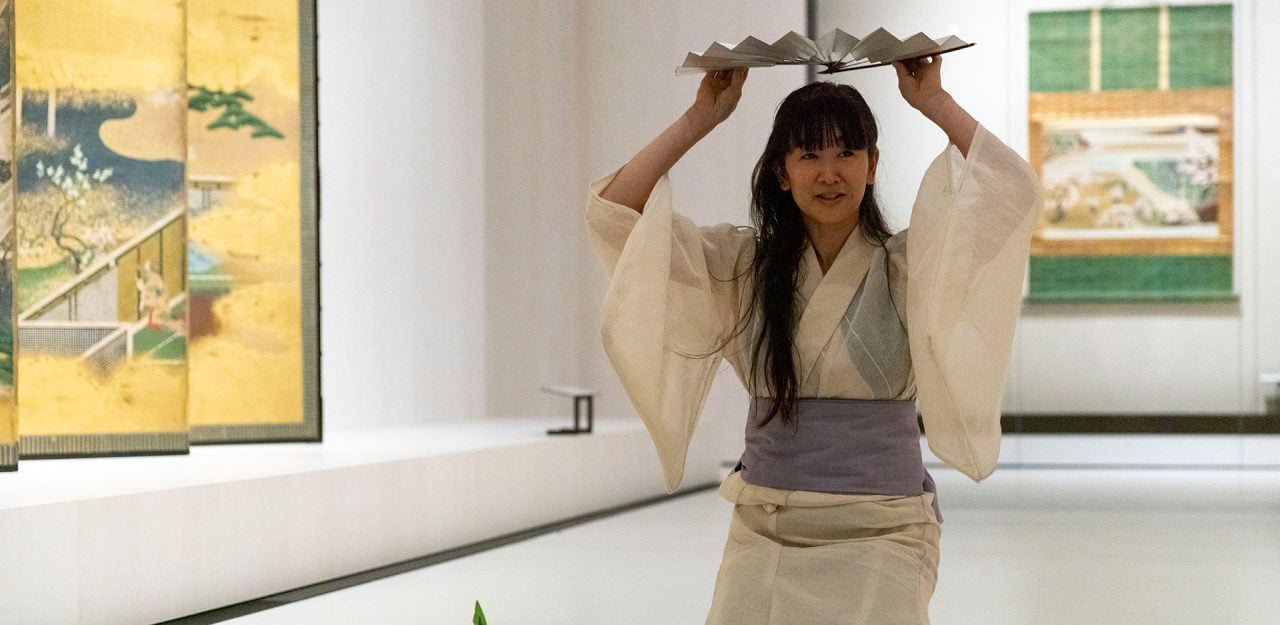Limited Freedom
{{ time.start_TS | TS2dateFormat('MMM') }}
{{ time.start_TS | TS2dateFormat('YYYY') }}
| 10 EUR, reduced 5 EUR |
| Please book your ticket in advance online or at the box office in the Foyer. |
| Duration: 90 min |
| English |
| Asia, 3rd floor |
| 25 persons |
| Belongs to: Ethnologisches Museum and Museum für Asiatische Kunst |
A body follows the kimono – it is shaped by it. Colour, pattern, fabric, the way a kimono (also kosode) is worn changes the body in its appearance and movement. It makes a spirit more mindful, steps more limited and movements more precise.
Between 1635 and 1858 Japan was almost completely closed off from the rest of the world. Thisled in many respects/areas to relatively extensive cultural and artistic isolation. Most people in Japan, until the late 19th century, did not know Western lifestyles nor Western clothing. Traditional everyday clothing shaped people’s bodies, thinking, and aesthetics.
Artist Yuko Matsuyama works at the junction of sound and movement. She began traditional Japanese dance training with her mother at the age of two and completed her training in performing arts at Takarazuka Music School in Japan. Over the past three decades she has participated in international productions of musical theatre, experimental music, and contemporary dance.
Alexander Hofmann, curator for arts from Japan at the Museum für Asiatische Kunst, and Yuko Matsuyama will enter into a creative dialogue with you. Join them and follow the movements of a kimono.
